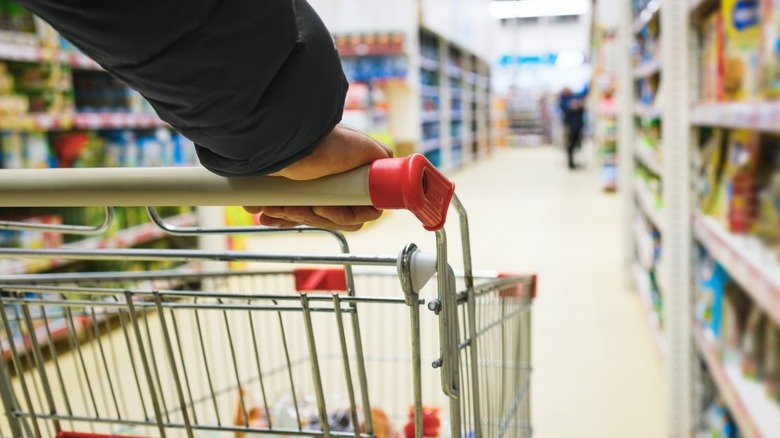Why You Should Always Check The Back Of The Shelf At Grocery Stores
Nothing is worse than carrying a gallon of milk home from the grocery store only to realize it expires in two days. Most grocery stores are busy enough that they rotate their stock often, so you'll usually never find anything outright expired. Still, sometimes, you might end up with something approaching its expiration date much sooner than you would like, forcing you to use it quickly or worse, throw it away before it's done. Most grocery stores are set up with each item in a row, so it's easy just to grab whatever is in front, which is by design — you're supposed to grab the item closest to the front.
Grocery shopping can be stressful, with shoppers just grabbing what is convenient to just get out as quickly as possible, reports HuffPost. We don't usually think to compare and make a choice between two seemingly identical items, but next time you pick up a gallon of milk, take a peek at the options at the back of the shelf.
The newest product is in the back
In restaurants and grocery stores, there's a rule called FIFO. According to State Food Safety, this stands for 'first in, first out,' meaning that the items that were first to come in on delivery are the first ones to be used or sold. In practice, this means that the oldest products need to be in the front, so they get grabbed first (via Michigan State University.) This is great for the consumer and for the grocery store most of the time because, say, for milk, if the newest gallons off the truck are put up front, the older ones in the back will go bad and need to be thrown away. Or, if the store is running low, you might accidentally get stuck with a gallon of spoiled milk.
The best way to hack this system, though, is to grab it from the back of the shelf. It doesn't matter much for shelf-stable items like cereal or canned goods. But suppose you're looking to stretch the longevity of your dairy or other highly perishable items. In that case, Chef Nicolette Pace tells Reader's Digest, "Newer expiration dates are placed in the back of shelves, so if you need a longer shelf life, check the back of the shelf."

